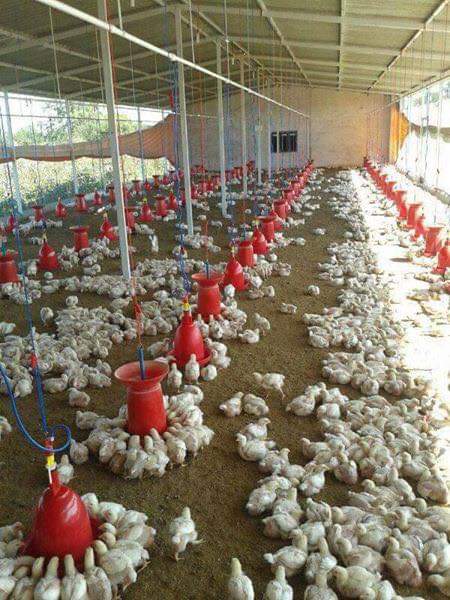Bio security in poultry Basics Principles you should know
Following are basic Biosecurity Principle for a ideal poultry farm
1. Biosecurity practices and farm hygiene are implemented on poultry farms to reduce the risk of disease agents moving on to farms from outside sources
a) wild bird populations or from other farms
b) the movement of disease agents between sheds on the same farm,
c) carry over of disease agents from one batch to the next in the shed environment,
d) and carry over of disease agents from breeding flocks to their progeny via the egg.
2. As implementing biosecurity is the most cost effective disease prevention means available, by following these three simple rules: “Isolation, Traffic Control & Sanitation” (Jeffrey),
3. Ultimately the producer should effectively be able to minimise any preventable disease outbreaks.
4. It is also important never to share tools or equipment or accept birds from neighbours (deGraft-Hanson).
5. By effectively separating birds in an enclosure, the likelihood of them coming into contact with pathogen carrying animals or these animals accessing the flock can significantly be reduced.
6. Though wild-birds present a direct threat to biosecurity, it is essential to ensure that household pets do not come into contact with the flock.
7. It is also necessary that the producer remember to disinfect their hands/clothing and shoes after being in direct contact with other livestock and family pets (deGraft-Hansona).
8. Sanitation is highly important to successful disease control.
9. IMPLEMENTATION OF HIGH BIOSECURITY STANDARDS IN POUTRY FARMS
12. VEHICLE SPRAYS
FOOT DIPS (footbath)
11. CONTROL OF WILD BIRDS, RODENTS AND OTHER DISEASE VECTORS
12. CLEANING AND DISINFECTION PROCEDURES
13. CLEANING OF FARM EQUIPMENT
14. DEAD BIRDS DISPOSAL
A basic biosecurity plan in poultry farms.:
1. The most important part of any biosecurity plan is having the right attitude.
2. Having all the correct precautions in place doesn’t do any good if workers and managers don’t follow the rules.
3. Replacement of birds / new stocking:
a) How new birds are brought in.
b) Is there a proper disinfection step in the shed?
4. Feed and new materials management:
Ensuring new litter and feed are delivered in a way that minimizes the risk of disease transmission.
5. Water management:
a) Periodically testing water to make sure it is free of contaminants.
b) Surface water sources must be monitored closely.
c) sanitisation of water regularly
6. Manure and old materials management:
a) How old litter and manure are being managed to ensure diseases are not spread.
b) This also applies to garbage and other farm waste.
7. Vector control for multiple species of pests:
Having plans in place to stop
a) insects,
b)rodents,
c) wild birds and even
d) pets from entering the house.
8. Equipment control in buildings and between buildings:
a) Making sure that, if equipment is being shared between production areas and farms,
b) it is being properly sanitized in between uses.
9. A mortality management plan:
a) How dead animals are handled in normal and catastrophic situations.
b) This includes regular trips to rendering facilities and ensuring there isn’t a breakdown in biosecurity there.
10. Poultry farmers should have basic strategy according to their need to draft their own biosecurity plan and fortify their premises.
Dr V. Rajendra Prasad
Poultry consultant, Hyderabad.


